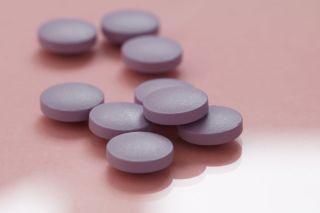Spravato vs. Wellbutrin: Which Treatment is Right for Your Treatment-Resistant Depression?

If you’ve been battling depression and have tried multiple treatments without success, you might be wondering what other options are available. When traditional antidepressants aren’t providing the relief you need, treatments like Wellbutrin or Spravato may offer new hope. While they approach depression differently, both of these medications have shown potential for helping people with treatment-resistant depression.
Understanding how these treatments work, their benefits, and their limitations can make all the difference when deciding your next steps. Whether you're exploring Wellbutrin as an alternative or considering Spravato for more immediate relief, this guide will help you weigh the options to find the best path forward.
How Wellbutrin Works
Wellbutrin (bupropion) is an atypical antidepressant, meaning it works differently from the more commonly prescribed SSRIs or SNRIs. It primarily targets norepinephrine and dopamine—two neurotransmitters that affect mood and energy levels. By increasing these chemicals in the brain, Wellbutrin can help improve symptoms of depression, especially for those who haven’t found relief from traditional antidepressants.
Common Uses
Wellbutrin is most often prescribed for individuals with major depressive disorder (MDD) and seasonal affective disorder (SAD). For those with treatment-resistant depression, Wellbutrin is sometimes explored as an alternative option when SSRIs or other medications haven’t worked. Additionally, Wellbutrin is used off-label for smoking cessation and has been considered in some cases for ADHD.
Advantages
One of the unique benefits of Wellbutrin is that it tends to have fewer of the side effects typically associated with other antidepressants, like weight gain or sexual dysfunction. It can also provide an energy boost, which can be helpful for individuals whose depression has left them feeling fatigued or unmotivated. For patients with treatment-resistant depression, this energy boost can sometimes be the extra push needed to start feeling more functional in daily life.
Limitations
However, Wellbutrin isn’t a one-size-fits-all solution, especially for people with treatment-resistant depression. Some patients find that it can heighten feelings of anxiety or cause insomnia, which may worsen certain symptoms. Additionally, it carries a higher risk of seizures, especially at higher doses, so it’s not recommended for individuals with seizure disorders or certain medical conditions.
In sum, while Wellbutrin offers potential benefits for those with treatment-resistant depression—particularly for those who want to avoid common side effects like weight gain—it may not be suitable for individuals prone to anxiety or those with a seizure risk. Like any treatment, it’s important to discuss with your healthcare provider whether Wellbutrin is a good fit for your specific situation.
How Spravato Works
If you’re reading this article, you may be considering Spravato (esketamine) as a treatment option for your TRD. Approved by the FDA in 2019, Spravato is specifically designed for adults with treatment-resistant depression—meaning it’s intended for individuals who haven’t found relief after trying at least two other antidepressants. Unlike traditional medications, Spravato works in a completely different way, offering hope for those who feel they’ve exhausted other options.
Mechanism of Action
Most antidepressants work by increasing serotonin, norepinephrine, or dopamine levels in the brain. Spravato, however, targets the brain’s NMDA (N-methyl-D-aspartate) receptors, which are part of the glutamate system—a different pathway related to mood regulation. By blocking NMDA receptors, Spravato increases glutamate levels, which helps restore normal brain function and improves mood. This unique mechanism of action allows Spravato to produce results more quickly than many other antidepressants.
Advantages
One of the most notable advantages of Spravato is how quickly it works. Many patients experience relief from depressive symptoms within hours or days, compared to the weeks or months it can take for traditional antidepressants like Wellbutrin to start working. This rapid effect can be crucial for individuals dealing with severe, treatment-resistant depression, where waiting for results isn’t an option.
Spravato is also highly effective for individuals who have tried and failed to find relief with at least two other medications. It’s especially helpful for patients in crisis or for those at risk of self-harm, where immediate symptom relief can be life-saving.
Considerations
However, Spravato is not like other antidepressants that you take at home. It must be administered in a certified medical facility under supervision due to its potential side effects. The treatment is given as a nasal spray, but because it can cause dissociation (a feeling of being disconnected from reality), dizziness, and temporary increases in blood pressure, patients are monitored closely for about two hours after each session. While this ensures safety, it also means that treatment requires regular visits to a healthcare provider.
Spravato’s unique method of administration and monitoring make it a more involved process compared to taking Wellbutrin at home. It’s important to weigh the convenience of at-home medications versus the intensive in-clinic treatment that Spravato requires, especially for individuals with busy schedules or limited access to healthcare facilities.
Can You Take Wellbutrin and Spravato Together?
For individuals with treatment-resistant depression, the idea of combining treatments like Wellbutrin and Spravato might seem like an appealing option. After all, both medications offer different approaches to improving mood and energy levels, so using them together could potentially provide stronger or faster relief. But is it safe—and does it work?
Combination Therapy
In some cases, healthcare providers may consider combining Wellbutrin and Spravato as part of a broader treatment plan. The key reason this combination can be effective is that Wellbutrin and Spravato work in completely different ways. While Wellbutrin primarily increases dopamine and norepinephrine, Spravato targets NMDA receptors and the glutamate system. Since they act on different pathways in the brain, taking both together may help address a wider range of symptoms, particularly in individuals who haven’t responded to other treatments.
However, combining these two treatments is not always recommended for everyone. It largely depends on your medical history, current health condition, and how well you tolerate each medication individually. Wellbutrin can sometimes increase anxiety, and Spravato can cause dissociation, so using both may exacerbate these side effects in some individuals.
Consulting a Provider
Before considering combination therapy, it’s crucial to consult your healthcare provider. They will evaluate whether combining Wellbutrin and Spravato is appropriate based on your specific case. Factors like your mental health history, how you’ve responded to other treatments, and your tolerance for each medication will all be taken into account.
It’s important to remember that not all patients will benefit from using both medications together, and in some cases, other treatment combinations may be more effective. Your healthcare provider can help you weigh the potential benefits and risks of combination therapy and guide you toward the best approach for your treatment-resistant depression.
Can You Take Wellbutrin on the Day of Spravato Treatment?
When starting Spravato treatments, many patients wonder if they can continue their existing medications, such as Wellbutrin, on the same day. Since both treatments target different brain pathways, it’s natural to ask whether taking Wellbutrin before or after a Spravato session is safe.
Safety Considerations
In most cases, patients are advised to continue their regular antidepressant medications—including Wellbutrin—while undergoing Spravato treatment. Wellbutrin doesn’t directly interact with Spravato in a way that poses significant risks, and since they act on different neurotransmitter systems, taking Wellbutrin on the day of your Spravato treatment is generally considered safe.
However, Spravato’s side effects—such as dissociation, dizziness, and temporary increases in blood pressure—mean it’s administered in a controlled environment where your vital signs are monitored. For this reason, it’s essential to inform your healthcare provider about any medications you’re taking, including Wellbutrin, before each Spravato session. Your provider may adjust the timing of Wellbutrin or monitor for any potential interactions during treatment.
Provider Guidance
Ultimately, whether you should take Wellbutrin on the same day as Spravato depends on your individual response to both medications. Some patients may need adjustments to their Wellbutrin dosage or timing to ensure it doesn’t intensify side effects like anxiety or insomnia, which could overlap with Spravato’s dissociative effects.
It’s crucial to follow your provider’s instructions carefully and report any side effects you experience during or after treatment. Regular check-ins with your healthcare team will ensure that your treatment remains both effective and safe, allowing for adjustments as needed.
Comparing Effectiveness and Onset of Action
For individuals with treatment-resistant depression, one of the most important factors in choosing a treatment is how quickly it can provide relief and how effective it is over time. When comparing Wellbutrin and Spravato, the differences in how fast they work and how they improve symptoms can be significant.
Wellbutrin
Wellbutrin is known for taking several weeks to start showing noticeable improvements in mood. Like most antidepressants, it gradually increases levels of norepinephrine and dopamine in the brain, which slowly improves energy and motivation. On average, it may take about 4 to 6 weeks to feel the full effects of Wellbutrin. For those dealing with less severe symptoms or for those who have experienced some benefits from other medications, this timeline may be manageable.
However, for individuals with treatment-resistant depression who need faster relief, this delayed onset can be a drawback. Although Wellbutrin has been helpful for many, its slower time frame and varied effectiveness may not be enough for those who need more immediate symptom control.
Spravato
Spravato, on the other hand, is designed for quick action. Many patients begin to feel relief within hours or days of their first dose. This rapid response can be crucial for people with severe depression, particularly for those at risk of self-harm or suicide. Spravato’s ability to provide fast symptom relief offers a significant advantage over medications like Wellbutrin, especially for individuals who cannot wait weeks for improvement.
In terms of overall effectiveness, Spravato has shown success in patients who have tried multiple antidepressants without relief. It’s specifically indicated for treatment-resistant depression, whereas Wellbutrin may not always be as effective for individuals in this category. That said, long-term results vary, and for some, the combination of Spravato’s immediate impact and Wellbutrin’s longer-term effects can work well together.
Who Benefits Most?
If you’ve tried several antidepressants with little success and need quick relief, Spravato may offer the best option, especially if you’re experiencing severe or urgent symptoms. Wellbutrin can be an effective choice for those who have experienced partial relief from other treatments and want to avoid common side effects like weight gain or sexual dysfunction. For some patients, a combination of both medications may provide the balance of fast action and long-term management that’s needed.
Ultimately, choosing between Wellbutrin and Spravato—or combining the two—should be based on your specific history with depression, how quickly you need relief, and how you respond to each medication.
Safety and Side Effects
When considering treatments for treatment-resistant depression, safety and potential side effects are key factors to weigh. Wellbutrin and Spravato differ significantly in their side effect profiles, and it’s important to understand how each might affect you.
Wellbutrin
Wellbutrin is generally well-tolerated but comes with its own set of side effects. Commonly reported issues include:
- Insomnia: Wellbutrin’s stimulating effects can sometimes make it harder to sleep, especially if taken later in the day.
- Anxiety: For some individuals, Wellbutrin can increase feelings of anxiety or agitation, which may be problematic if you’re already prone to anxiety disorders.
- Dry Mouth and Headaches: These are mild but common side effects.
- Seizure Risk: One of the more serious risks of Wellbutrin is an increased risk of seizures, particularly at higher doses. This makes it unsuitable for people with a history of seizures or certain other medical conditions. Your healthcare provider will evaluate whether this risk is a concern based on your medical history.
Despite these potential side effects, Wellbutrin has the advantage of being less likely to cause weight gain or sexual dysfunction—common issues with many other antidepressants. This can make it an attractive option for patients who want to avoid those specific side effects.
Spravato
Spravato, by contrast, comes with a different set of considerations due to its fast-acting nature and unique mechanism. Some of the most common side effects include:
- Dissociation: This is one of the most notable side effects, where patients may feel disconnected from reality or experience a sense of being "out of body." While this is typically temporary and wears off after treatment, it can be unsettling for some.
- Dizziness and Nausea: Spravato can cause dizziness and nausea during and after treatment. Because of this, patients are monitored closely after each session.
- Increased Blood Pressure: Spravato can cause temporary spikes in blood pressure, which is why it must be administered in a controlled medical environment where vital signs can be closely watched.
Due to these side effects, Spravato requires in-clinic administration under medical supervision, with patients remaining in the clinic for observation for about two hours after treatment. While this ensures safety, it also means that Spravato involves a more intensive commitment compared to at-home medications like Wellbutrin.
Long-Term Considerations
Both Wellbutrin and Spravato are designed for long-term management of depression, but the level of monitoring required differs. Wellbutrin, taken daily at home, requires regular check-ins with your healthcare provider to adjust dosage and manage side effects. Spravato, due to its in-clinic administration, offers more immediate oversight during each treatment session. Over time, Spravato treatments become less frequent, moving to maintenance doses, but regular medical supervision remains necessary.
Understanding the safety profiles of both treatments can help you and your provider decide which is the best fit for you, based on your medical history, lifestyle, and tolerance for potential side effects.
Accessibility and Cost
When choosing between Wellbutrin and Spravato for treatment-resistant depression, accessibility and cost are important practical factors to consider. Both medications come with their own requirements and financial implications, and understanding these can help you decide which option best fits your lifestyle and budget.
Wellbutrin
Wellbutrin is widely available and affordable, making it one of the more accessible antidepressant options. It’s available in both brand-name and generic forms, with the generic (bupropion) being significantly cheaper. Most insurance plans cover Wellbutrin, and the cost for those without insurance is generally manageable, especially for the generic version.
Wellbutrin is also convenient in terms of administration. Since it’s an oral medication taken at home, there’s no need for frequent doctor’s visits beyond routine check-ins to monitor progress or adjust dosage. This makes Wellbutrin a less demanding treatment option for those with busy schedules or limited access to in-clinic treatments.
Spravato
Spravato, on the other hand, is a more specialized treatment, and its accessibility is more limited. Since it must be administered under medical supervision in a certified clinic, patients need to schedule regular visits for treatment. During the induction phase, Spravato is usually administered twice a week for about four weeks, followed by weekly or bi-weekly maintenance treatments. This means you’ll need to plan for time off work or other responsibilities to accommodate these clinic visits.
In terms of cost, Spravato is significantly more expensive than Wellbutrin, with individual treatment sessions costing several hundred dollars each. However, because it is FDA-approved for treatment-resistant depression, many insurance plans do cover Spravato. Patients should check with their insurance provider to understand coverage options, as prior authorization is often required. Additionally, Janssen, the manufacturer of Spravato, offers financial assistance programs for eligible patients to help offset the high cost of treatment.
Weighing Convenience and Cost
If cost and convenience are top priorities for you, Wellbutrin offers the clear advantage of affordability and ease of use, especially for those who prefer a medication that can be taken at home. However, for individuals who need faster relief and have exhausted other options, the higher cost and clinic visits required for Spravato may be worth the investment.
While Spravato is less convenient, it’s specifically designed for individuals with treatment-resistant depression, offering the potential for quick, life-changing results when other medications have failed.
Choosing Between Spravato and Wellbutrin
Deciding between Spravato and Wellbutrin for treatment-resistant depression comes down to your specific needs, medical history, and how you respond to each treatment. Wellbutrin offers an accessible and affordable option, especially for those looking to avoid common side effects like weight gain or sexual dysfunction. It’s a convenient at-home medication but may take weeks to deliver noticeable results.
On the other hand, Spravato is designed for those who need rapid relief after other treatments have failed. While it requires in-clinic administration and comes with a higher cost, its quick action and effectiveness in treating severe depression make it a valuable option for many.
Both treatments come with their own advantages and considerations, and in some cases, they may even be used together under the guidance of a healthcare provider. Whether you’re seeking immediate relief or looking for a longer-term solution, the best approach is to consult with your healthcare team to develop a treatment plan tailored to your unique needs.
If you’re struggling with treatment-resistant depression and aren’t sure which option is right for you, talk to your provider about whether Wellbutrin, Spravato, or a combination of treatments might be the best path forward.





